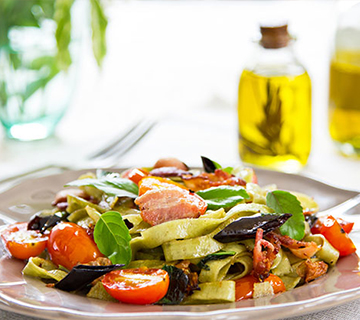Back to BlueNews

10 Tips for Revamping Your Diet in a Delicious, Budget-friendly Way

Many people think that eating healthy is prohibitively expensive. Contrary to popular belief, there’s a way to eat well—and not break the bank. You just need a little ingenuity. Here are 10 ways to revamp your diet in a delicious, budget-friendly way.
- Make a meal plan for the week and stick to it. When you’re out shopping, don’t buy anything you don’t have a plan for. Your meal plan doesn’t have to be fancy, but organizing recipes and ingredients in advance can help you stay on track—and will help you avoid last-minute splurges.
- Sign up to receive recipes from healthy eating blogs and recipe websites, so you get inspiration delivered straight to your inbox—and don’t have to hunt around online when you’re hungry. Choose a new recipe to try each week.
- Keep it simple. In general, the fewer ingredients a recipe has, the easier and cheaper it is to make. Look for recipes starring simple, non-processed, fresh ingredients.
- Can’t afford all-organic produce all the time? Try loading up on these fruits and veggies, which typically have the least pesticide residue: avocado, sweet corn, pineapple, cabbage, sweet peas, onions, asparagus, mangoes, papayas, kiwis, eggplant, grapefruit, cantaloupe, cauliflower and sweet potatoes.
- Start clipping coupons, and sign up for a rewards card if your grocery store offers one. Also, check out local farmers’ markets as well as wholesale club stores, which can both offer surprisingly low prices on some fresh foods.
- Get your fresh food straight from the source. Investigate farm shares and community-supported agriculture (CSA) programs. Many small towns offer CSA programs, which allow you to pay an up-front fee for a weekly box of varied produce throughout the growing season.
- Don’t rule out frozen foods. Many foods are flash frozen at the peak of freshness, which means that they can actually be fresher than their non-frozen counterparts. And because they’re already frozen, there’s less pressure to use them up in a set period of time.
- Don’t want to buy it? Grow it. Consider planting a vegetable or herb garden to have an inexpensive supply of fresh produce. If you’re challenged for yard space, try a container garden on a sunny porch, or even a few indoor pots on a windowsill.
- Cook once, then repurpose many times. Preparing a few key components to use in multiple dishes can help you save time and money during the week. For example, one roasted chicken can be used over the course of a few days in soup, salad or tacos.
- Still getting the knack of meal planning and have to use up leftovers at the end of the week? Try tossing extra meat and veggies into a casserole, or combining with homemade stock to create a hearty soup or stew.